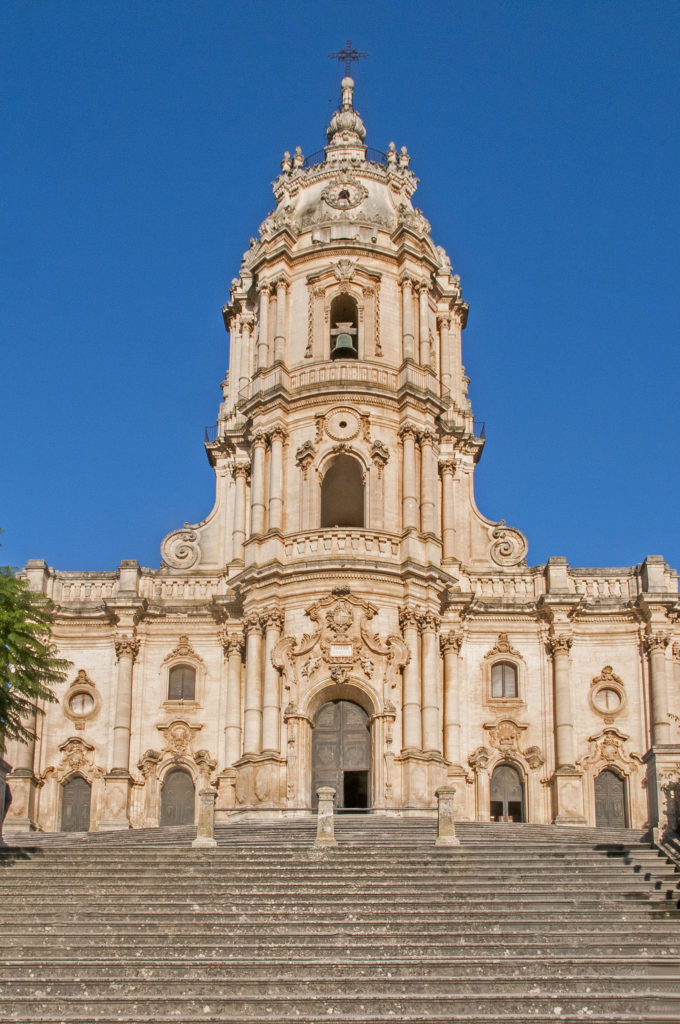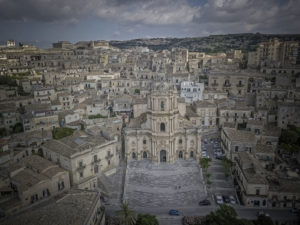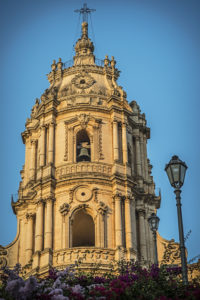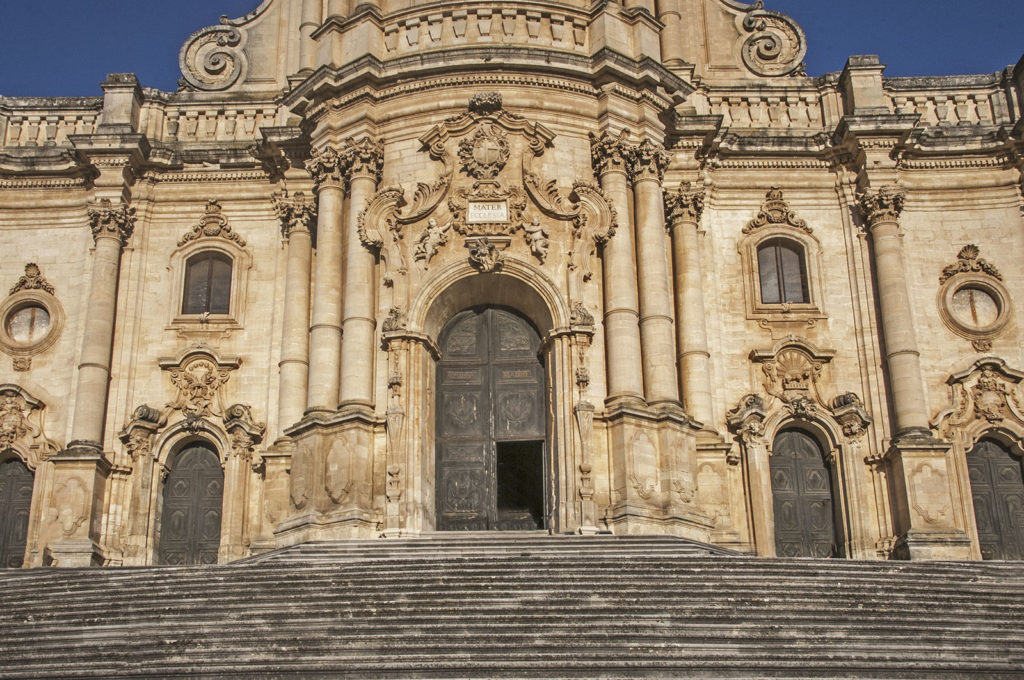Modica has two large architectural out-of-scale buildings that dominate the entire city: one of these is the Cathedral of San Giorgio, the most monumental ecclesiastical building in the Val di Noto.

The current church is the greatest example of Baroque theatricality emphasised by its position at the top of the scenic 250-step staircase designed to connect the two different levels of the city.
With its majestic
tower façade
it is one of the major symbols of Sicilian Baroque.


Its origins date back to the medieval age. It was destroyed and rebuilt several times due to the seismic events of 1542, 1613 and the devastating earthquake of 1693. It was built in 1702 and completed with the placing of the iron cross on the
spire
in 1842.
 Several architects worked on the project, enriched by designs in continuous evolution, given the duration of the interventions over a long time. In particular,
Rosario Gagliardi
Several architects worked on the project, enriched by designs in continuous evolution, given the duration of the interventions over a long time. In particular,
Rosario Gagliardi
supervised the work on the characteristic tower façade, just over 60 metres high.
Although it is not shown in the project documents, from 1761 onwards the architect Francesco Paolo Labìsi continued the work, working on the second and third levels of the façade and the Rococo portals with their sinuous shapes and rich decorations.
The entrance portals were later built by master builder Carmelo Cultraro. The genius of the Sicilian renovation also included proposals from European Baroque, so much so that some solutions adopted in the façade of
Dresden Cathedral
, completed in 1753, may have been used as an example by Labìsi.